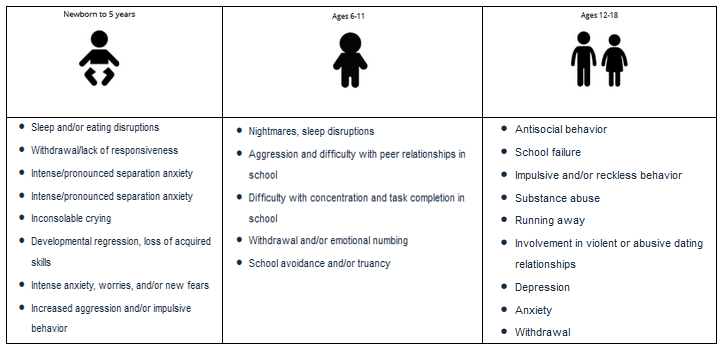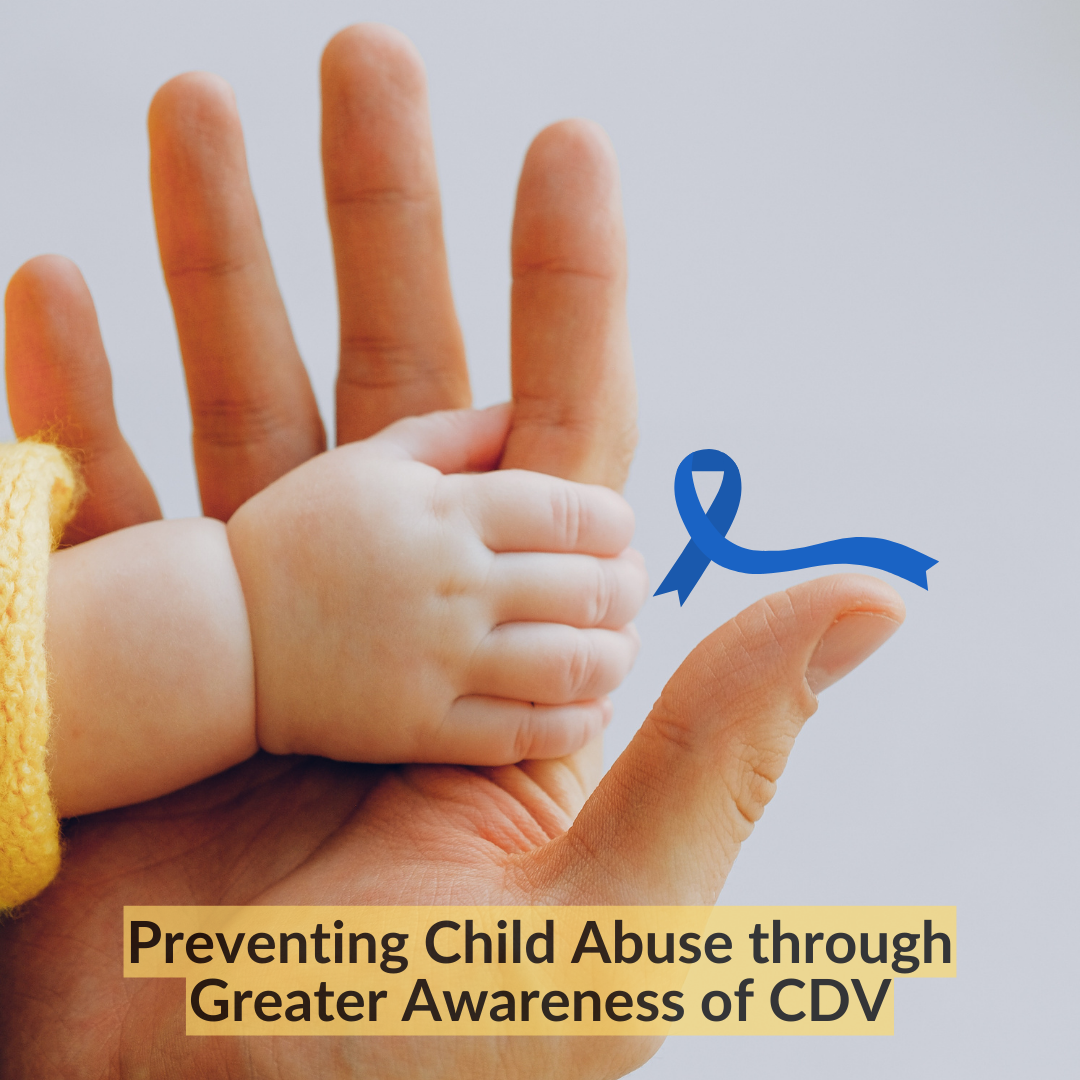Childhood Domestic Violence and Child Abuse are Connected
Starting now during Child Abuse Prevention Month, what if there were a more effective way to prevent it for future generations? What if there were a way to address current child abuse cases by looking deeper into connections that the adults of the house faced when they were children?
Where Would that Start?
It could and should start with making the connection to another global childhood adversity called Childhood Domestic Violence (CDV). These adversities often coexist with children who grow up with violence in their homes. CDV is “the single best predictor of becoming a victim or perpetrator of domestic violence” later in life. These children, who may have faced both adversities, are more likely to become child abusers themselves. This will enable the cycle of childhood trauma to continue.
The Definition of Child Abuse
Child Abuse, (which also includes neglect) as defined by the CDC, is “any act or series of acts of commission or omission by a parent or other caregiver (e.g., clergy, coach, teacher) that results in harm, potential for harm, or threat of harm to a child.”
The Definition of CDV
What is Childhood Domestic Violence? (CDV)
CDV is when a person grows up living in a home with domestic violence. From the lens of a child, domestic violence is violence between parents or violence towards a parent, perhaps from a stepparent or significant other. If you’re unsure whether you’ve experienced CDV, a simple screening tool is available here.
How Child Abuse and CDV are Intertwined
A child is much more likely to experience child abuse or neglect if at least one parent grew up with CDV. In addition, the two adversities very frequently co-occur in the same household. This further blurs the lines and also amplifies the impact.
Evidence shows that when a child experiences both CDV and child abuse together in their childhood home, they tend to fare worse later in life than if they experienced only one or the other of these adversities.
Although they may seem like separate issues, these two experiences are deeply connected:
- Most perpetrators of domestic violence are men. And seven in ten men who are violent toward their partners are also violent toward their children.
- If a child lives in a home with domestic violence, they are 15 times more likely to be abused.
- Up to 70% of women in domestic violence shelters report that child abuse also occurred in their homes.
- 38% of abused children are exposed to domestic violence in their homes. 78% of the time, the domestic violence leads to child abuse.
- About 30% of abused and neglected children will later abuse their own children.
If you know a child who is experiencing abuse or CDV, they are likely experiencing both issues in their home.
Why Child Abuse and CDV Must be Looked at Together within Families
Chief Program Officer of CASA Travis County, Texas, Emily Rudenick LeBlanc, says there is an undeniable link between domestic violence and child abuse. She believes that the problem in society is that they are treated as separate issues – she calls them siloed issues.
Families that struggle with DV are often the same families struggling with child maltreatment and vice versa. She spent time as a therapist that focused on teens, and realized that children who witnessed DV (more aptly called growing up with CDV), were far more likely to be abused themselves. 30 – 60% of children living in homes with DV are also victims of abuse.
 |
In homes where there is domestic violence, children are physically abused and neglected at a rate 15 times higher than the national average. So, CDV is a strong precursor to child abuse. |
The Impact of Child Abuse and CDV is Similar
“Most people know of or can imagine the extreme negative effects of child abuse. But what many fail to grasp is the similar impact of Childhood Domestic Violence on a person, as well as its strong relation to child abuse. And those are key pieces of the puzzle in addressing both issues.”
Dr. Linda Olson, licensed psychologist and psychotherapist
Although child abuse and CDV refer to different experiences, they can both cause childhood trauma. Child abuse and CDV are both examples of Adverse Childhood Experiences (ACEs). When a child experiences ACEs, they are more likely to:
- Have behavioral issues as children
- Abuse alcohol and/or drugs as adults
- Experience physical health issues such as obesity, diabetes, and heart disease
- Experience mental health issues such as suicidal thoughts, depression, and anxiety
ACEs are Traumatic Events or Circumstances that can Cause Lifelong Adverse Outcomes for Children.
Jacob Stapledon, of the Children’s Cove Child Advocacy Center, believes that there is a physical and neurological impact on a child who witnesses and experiences domestic violence. He, however, sets aside definitions when it comes to the effects of child abuse or CDV. He believes the damage is equal and that child abuse is the same as CDV.
Look at the chart below to see how CDV impacts a child’s key areas of life:

It is the neurological impact of both Child Abuse and/or CDV that is most striking. Both adversities affect a child’s developing brain architecture by causing stress that exceeds the norm, known as toxic stress. This leads to fight or flight survival mechanisms to overdevelop, as well as causing behavioral and health issues. Learn more about toxic stress.
Child abuse and neglect impact cognitive skills and can cause a variety of diseases prematurely. It can also lead to mental health issues such as depression and thoughts of suicide, as well as increase the odds of risky or criminal behaviors into adulthood.
CDV has similar impacts exhibited by these statistics:

The Lack of Awareness Around the Relationship Between Childhood Domestic Violence and Child Abuse
CDV as an ACE has considerably less awareness than all the other ones, including child abuse. Compared to the other 9, which are known and have >90% general awareness, CDV has <10% awareness. It has never been properly branded or addressed, even by experts in the field. So even among those who face it, most don’t realize it’s “a thing”. Or that it is something that happened to THEM, and those who do, don’t know what to call it.
The lack of awareness and understanding can lead to stigma, confusion, or minimizing of its gravity. CDV is often confused with other ACEs, like physical child abuse, emotional abuse, or other adversities in a home, like domestic violence. And its gravity is often downplayed with words like “witness,” which is frequently used to describe it.
How Spreading Awareness of Childhood Domestic Violence is a Long-term Child Abuse Prevention Strategy
This lack of awareness by not only those in the field but also the parents and caregivers who are abusive prevents the prevention of child abuse in the future. It cannot be overlooked that those who grow up with CDV are 2-3 times more likely to repeat the cycle of violence in adulthood. Growing up with domestic violence is the single best predictor of whether or not someone will become a victim or perpetrator of domestic violence in adulthood.
And having looked at the statistics that CDV and child abuse do intertwine, there must be a more cohesive connection between child and adult within families. This will help see that combating the ACE of CDV can prevent a new generation from being caught up in a new cycle of child abuse.
Even Temporary Relationships with a Caring Adult Help
Researchers have found that even when children have temporary relationships with caring adults, they are more likely to develop resilience and experience positive life outcomes. These can include teachers, daycare providers, and mentors. For example, one study shows that abused children are more likely to avoid alcohol and tobacco use when they have support from caring adults.
Those who encounter children and adults who face either adversity should consider utilizing resources that can help them better understand what CDV is while supporting efforts to aid in child abuse prevention.
Helping to Fight Against Child Abuse and CDV Across Generations
Change A Life gives you guidance on ways to step in to help a child who is facing childhood trauma from CDV. And for anyone who works with abused or neglected children, this program will still give you a new perspective and resources that can help. It will also highlight the relationship to your work and CDV, as in many cases, you may not be aware of it, but it exists.
Resiliency-Focused Mentor Training builds upon the concepts introduced in the first program, delving deeper into topics related to resiliency, neuroscience, and psychology, as they pertain to children facing significant adversities.
CDV Resources
All these groups of professionals, as well as individuals, would benefit from these resources. They can gain more knowledge and perspective to take on the prevention of child abuse and work with adults who have grown up with CDV.
- Police may be the first responders in a DV incident.
- CASA deals with abused and neglected children.
- Social Workers, Shelters, Youth Crisis Centers, and other Organizations are trained professionals who help vulnerable populations.
- Educators have the potential to be an early line of defense by being a supportive adult to a child.
- Medical Staff can discover mental or physical problems of a child or adult.
- Coalitions, school boards, and other nonprofits are driven to educate and bring awareness
Connecting the Dots to Change the Cycle of Abuse and Violence
It’s important for those who are in a home with violence and abuse and those who work with these families to have the awareness and resources that can help the adults connect the dots. This means understanding that what they experienced in childhood is impacting their lives as well as their children’s. Multiple generations are living with these adversities simultaneously and repeating the same patterns.
By shifting the thought process for the adults in these families, enabling them to understand that what they faced is hurting themselves and others, they can prevent their children from having to live through what they did.

